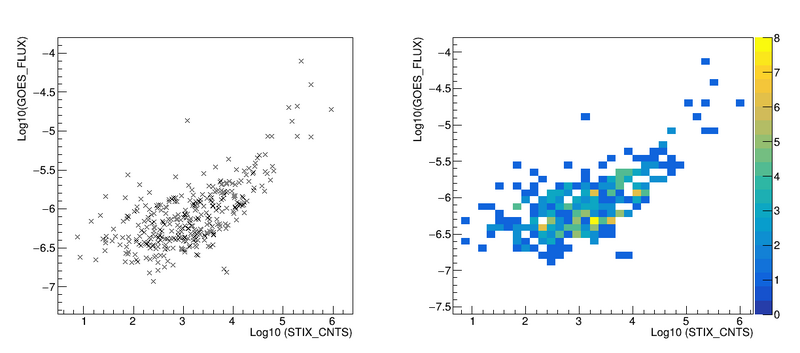Difference between revisions of "GOES Flux vs STIX counts"
| Line 1: | Line 1: | ||
[[File:Goes-stix-scatter.png|800px|thumb|none| Fig. 1: Scatter plot of STIX counts versus GOES flux in log-log scale. | [[File:Goes-stix-scatter.png|800px|thumb|none| Fig. 1: Scatter plot of STIX counts versus GOES flux in log-log scale. | ||
STIX counts are divided by the squared distances between Solar Orbiter and the Sun. 1045 flares with look-angles from the Earth smaller than 90 degrees are selected. ]] | STIX counts are divided by the squared distances between Solar Orbiter and the Sun. 1045 flares with look-angles from the Earth smaller than 90 degrees are selected. ]] | ||
| − | [[File:Goes-stix-flux-fit.png|600px|thumb|none| Fig. 2 A profile of the histogram | + | [[File:Goes-stix-flux-fit.png|600px|thumb|none| Fig. 2 A profile of the histogram shown in Fig. 1. A cubic function fit is fitted to the profile. ]] |
Revision as of 10:43, 15 January 2022
File:Goes-stix-flux-fit.png
Fig. 2 A profile of the histogram shown in Fig. 1. A cubic function fit is fitted to the profile.
The GOES flux of a flare is estimated using
flux=10^(p0+p1*x+p2**x^2+p3*x^3),
with x=log10(stix_peak_counts)/r^2
where p0, p1, p2 are the parameters from the polynomial curve fit, peak_counts is the STIX QL LC peak counts and r is the distance between the Sun and solar orbiter in units of au.
